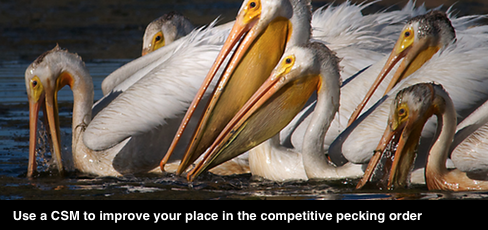Use a competitive solutions matrix (CSM) as part of proposal strategy making.
The CSM lets you match your solution against each identified prospect need and issue, and then compare your response to competitors’ offerings for each item. The exercise helps pinpoint strengths and weaknesses and inform decisions on how to address them in the proposal.
How to set up a competitive solutions matrix
Open an Excel worksheet and create the column headers below:
- Issue: Identifies a specific strategic driver or need, concern, desire or preference expressed by the prospect. Each issue will become a row in the matrix.
- Requirement: Describes specifically what the client requires. What’s the ideal response from the client’s point of view?
- Available solution: How does your planned solution address the issue?
- Gap: What is the gap (positive or negative) between the requirement and your solution? Quantify the gap whenever possible.
- Competitor No. 1 Solution: How does your closest competitor address the issue? If you have two or more close competitors, add a column for each. Include any competitors who typically bid low. Highlight competitors with an advantage in addressing this specific issue. In each case identify the gap in the same way as for the previous column.
- Differentiators: Identify your advantage/disadvantage relative to highlighted competitors. Include any offsetting factors.
- Strategy: How will you address disadvantages and leverage advantages? Options range from stressing advantages to redesigning your solution.
- Action: Who needs to do what and when to act on the strategy?
Facilitating matrix completion
- Group issues by each main RFP section or, if you develop the matrix during sales discovery, by sections that align with a typical statement of work. Don’t make the mistake of focusing only on the technical solution—RFP issuers usually have important issues around transition (implementation), after sales service, etc.
- Because issue identification is a brainstorming exercise demanding a different kind of thinking than issue analysis, populate the first column with as many issues as possible, and then work across the row to analyse each issue.
- Make a special effort to use quantifiable criteria for requirements, solutions and gaps, so you can measure the success of any actions you decide to take.
Start building your matrix as early as possible
The ideal time to develop this matrix is pre-RFP. During the needs analysis phase, your prospect can freely express all issues and opinions, including about vendor preferences. This is one of the key benefits of focused pre-RFP pursuit and discovery.
The payoff
Armed with this matrix, you can build a strong proposal strategy, including win themes and value propositions. At the proposal kickoff meeting, you’ll be able to help content developers focus on the messages most likely to convince section evaluators.
With this clear direction, they’ll work more efficiently and turn out stronger content.


